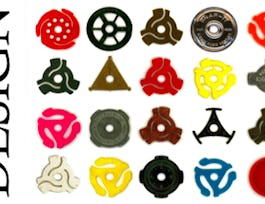Do you work for a nonprofit or in the social sector? Are you struggling to solve the problems and meet the needs of the people you serve? Come learn more about how design thinking, a human-centered approach to problem solving, can help you truly understand an issue, generate ideas worth testing and iterate to find solutions that make a real difference. Through global stories from areas as diverse as government, health care, and education, we’ll show you the tools, techniques and mindset needed to use design thinking to uncover new and creative solutions in the social sector.



Design Thinking for the Greater Good: Innovation in the Social Sector

Instructor: Jeanne M. Liedtka
Sponsored by FutureX
44,397 already enrolled
(411 reviews)
Recommended experience
What you'll learn
What design thinking is and when to use it
How to prepare to see and take action when opportunity arises
How to use design thinking to generate innovative ideas
How to take the many ideas you generate and determine which ones are likely to produce specific, desired outcomes
Skills you'll gain
- Complex Problem Solving
- Critical Thinking and Problem Solving
- Human Centered Design
- Initiative and Leadership
- Product Development
- Creativity
- Stakeholder Engagement
- Creative Thinking
- Innovation
- Brainstorming
- Design Thinking
- Product Design
- Prototyping
- Collaboration
- Teamwork
- Problem Solving
- Design and Product
- Creative Problem-Solving
- Product Management
- Ideation
Details to know

Add to your LinkedIn profile
4 assignments
See how employees at top companies are mastering in-demand skills


Earn a career certificate
Add this credential to your LinkedIn profile, resume, or CV
Share it on social media and in your performance review

There are 4 modules in this course
Welcome to the first week of Design Thinking in the Social Sector! This week, we provide an overview of design thinking: what it is, why it is different, and why we need it in these uncertain times, especially in complex organizations. We’ll examine the four simple questions at the heart of the design thinking methodology, and illustrate that approach with a visit to the Kingwood Institute in the UK. We’ll conclude this module by giving you a chance to hear from some other experts – Angela Meyer on the visualization tool and Dan Pink on six abilities that matter most.
What's included
13 videos1 reading1 assignment
Welcome back! This week, we’ll examine the types of problems that are well-suited for design thinking. We'll recognize what we need to do before we begin a project, and then take a deep dive into the first question in the design thinking process, “What is?” and the concepts of insights and design criteria. You’ll see how asking “What is?” helped improve daily living for adults with autism, their families, and the staff of the Kingwood Trust. Then we’ll look at the Monash University Medical Centre in Australia and how it asked this same question to make patient-centered care a reality. Along the way you’ll learn about two design tools: journey mapping and repertoire.
What's included
12 videos1 assignment
Welcome back! This week, we'll continue our exploration of repertoire and a "mindset for innovation" through two personas we call George and Geoffrey. We'll examine the question "What If?" as a way to think about possibilities. You'll look closely at how brainstorming within the design thinking process helped organizations as different as the Federal Drug Administration and the leaders of a small town of Iveragh, Ireland. This week's tools, storytelling and stakeholder mapping, illustrate ways to gather more information about projects and users.
What's included
11 videos1 assignment
Welcome to our final week! This week we transition from idea generation to testing by examining the intersection of what stakeholders want and what the organization can sustainably offer. We'll consider the role of prototypes as a way to test our assumptions about a solution, and consider what it takes to launch a solution into practice, and see real-life examples of prototyping and testing in social sectors as diverse as healthcare and agriculture. You'll begin to think about your own social sector challenge you could tackle with design thinking. We end this week with some advice and actions for impact.
What's included
14 videos5 readings1 assignment1 peer review
Instructor

Offered by
Why people choose Coursera for their career




Learner reviews
411 reviews
- 5 stars
72.33%
- 4 stars
22.81%
- 3 stars
3.39%
- 2 stars
1.21%
- 1 star
0.24%
Showing 3 of 411
Reviewed on Jul 27, 2020
The course really helped in understanding the process of designing a solution and more importantly focus on redefining the problem! A course for those who want to learn the innovation process.
Reviewed on Oct 3, 2023
An engaging and challenging course with highly knowledgeable professors. I highly recommend this course as an introduction to design thinking
Reviewed on Mar 29, 2020
Fascinating set of topics, really well structured in a way that makes the subject easy to understand, and interesting and engaging speakers.
Recommended if you're interested in Social Sciences

Parsons School of Design, The New School

Korea Advanced Institute of Science and Technology(KAIST)

The Open University

University of Pennsylvania

Open new doors with Coursera Plus
Unlimited access to 10,000+ world-class courses, hands-on projects, and job-ready certificate programs - all included in your subscription
Advance your career with an online degree
Earn a degree from world-class universities - 100% online
Join over 3,400 global companies that choose Coursera for Business
Upskill your employees to excel in the digital economy


